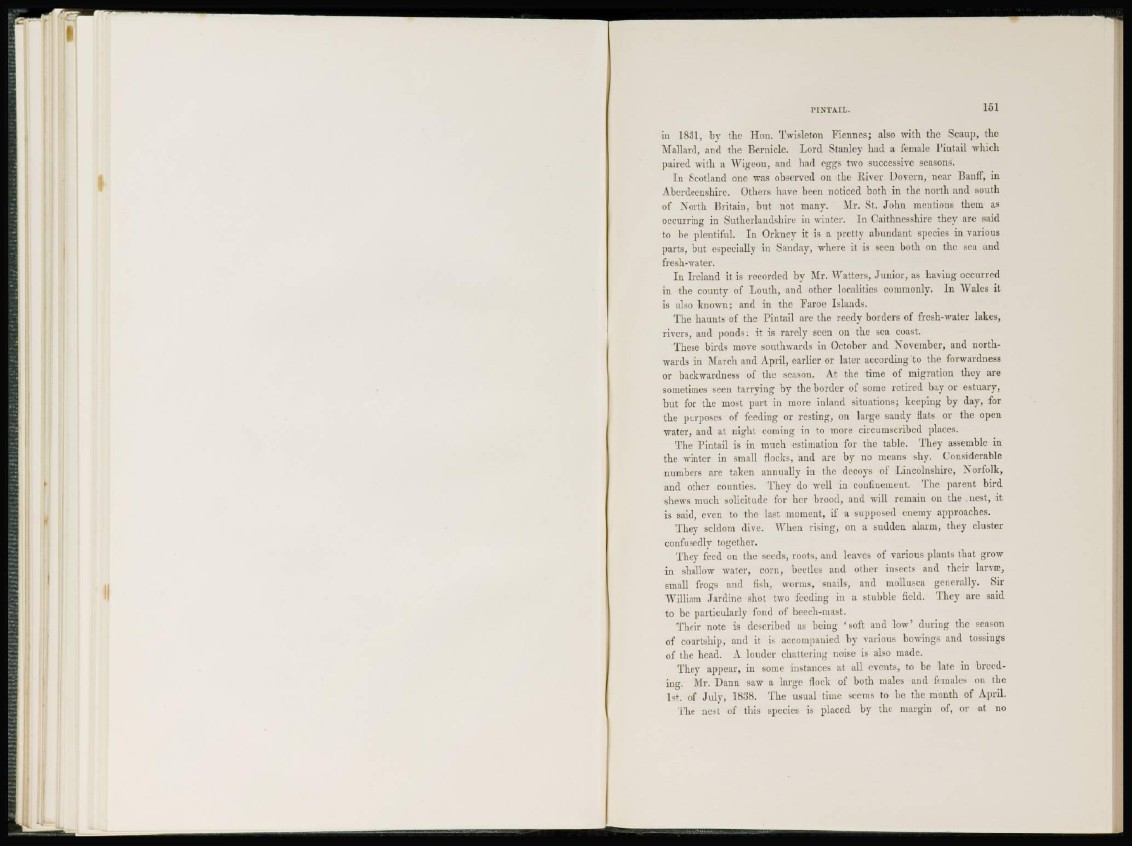
in 1831, by the Hon. Twisleton Fiennes; also with the Scaup, the
Mallard, and the Bernicle. Lord Stanley had a female Pintail which
paired with a Wigeon, and had eggs two successive seasons.
hi Scotland one was observed on the River Dovern, near Banff, in
Aberdeenshire. Others have been noticed both in the north and south
of North Britain, but not many. Mr. St. John mentions them as
occurring in Sutherlandshire in winter. In Oaithnesshire they are said
to be plentiful. In Orkney it is a pretty abundant species in various
parts, but especially in Sanday, where it is seen both on the sea and
fresh-water.
I n Ireland it is recorded by Mr. TVatters, Junior, as having occurred
in the county of Louth, and other localities commonly. In Wales it
is also known; and in the Faroe Islands.
The haunts of the Pintail are the reedy borders of fresh-water lakes,
rivers, and ponds; it is rarely seen on the sea coast.
These birds move southwards in October and November, and northwards
in March and April, earlier or later according to the forwardness
or backwardness of the season. At the time of migration they are
sometimes seen tarrying by the border of some retired bay or estuary,
but for the most part in more inland situations; keeping by day, for
the purposes of feeding or resting, on large sandy flats or the open
water, and at night coming in to more circumscribed places.
The Pintail is in much estimation for the table. They assemble in
the winter in small flocks, and are by no means shy. Considerable
numbers are taken annually in the decoys of Lincolnshire, Norfolk,
and other counties. They do well in confinement. The parent bird
shews much solicitude for her brood, and will remain on the nest, it
is said, even to the last moment, if a supposed enemy approaches.
They seldom dive. When rising, on a sudden alarm, they cluster
confusedly together.
They feed on the seeds, roots, and leaves of various plants that grow
in shallow water, corn, beetles and other insects and their larvre,
small frogs and fish, worms, snails, and mollusca generally. Sir
AVilliam Jardine shot two feeding in a stubble field. They are said
to be particularly fond of beech-mast.
Their note is described as being 'soft and low' during the season
of courtship, and it is accompanied by various bowings and tossings
of the head. A louder chattering noise is also made.
They appear, in some instances at all events, to be late in breeding.
Mr. Dann saw a large flock of both males and females on the
l«t. of July, I 8 0 8 . The usual time seems to be the month of April.
The nest of this species is placed by the margin of, or at no